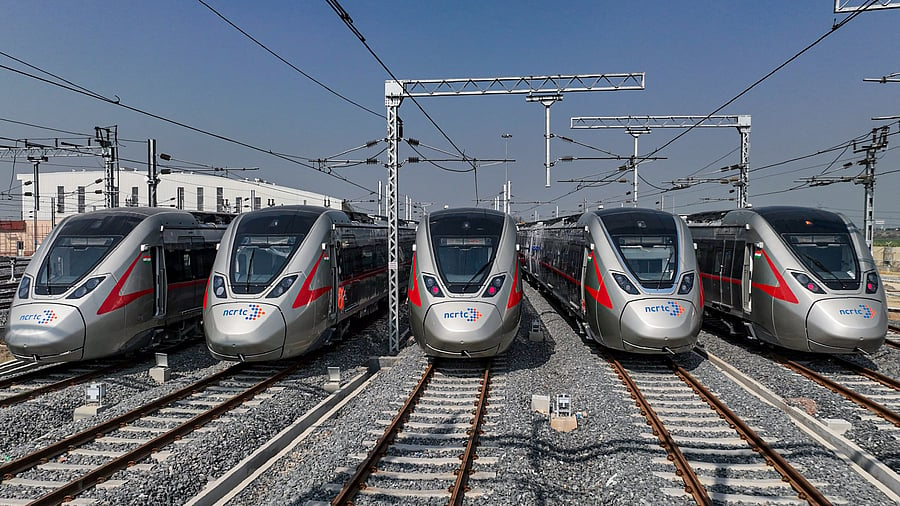
India’s first RRTS corridor connects Delhi to Meerut via Ghaziabad. It spans 82 km, has 25 stations and reduces travel time to under 60 minutes.
Credit: PTI File Photo
Bengaluru: Amid the state government’s plans to extend the metro network to Bengaluru’s towns, calls are growing for building a semi-high-speed rail alternative instead.
P C Mohan, Bangalore Central MP, said he had requested the railways to conduct feasibility studies for constructing Regional Rapid Transit System (RRTS) corridors on the following routes: Bengaluru-Mandya-Mysuru, Bengaluru–Ramanagar, Bengaluru-Tumakuru and Bengaluru–Kolar.
He argued that proposals to extend the metro to Tumakuru, Hosur, Hoskote or Bidadi were not about connectivity but “floated to inflate real estate prices”.
“The moment such news spreads, false claims of Rs 100/sq ft hikes begin, driven by real estate interests. Metro is a misplaced solution for suburbs,” he wrote on X and suggested that the RRTS was better suited for Bengaluru’s suburban and regional mobility needs.
“With high-speed, high-frequency, point-to-point service, fewer stops and dedicated corridors, it ensures faster, more reliable travel for long-distance commuters,” he added.
Speaking to DH, Mohan stressed that the metro was better suited for the city’s core areas and said he had written a letter to the Minister of State for Railways, V Somanna, requesting the construction of RRTS corridors. The minister has responded positively and assured to conduct feasibility studies, he added.
India’s first RRTS corridor runs from Delhi to Meerut via Ghaziabad. It spans 82 km, has 25 stations and reduces travel time to under 60 minutes as trains’ average speed is 100 kmph.
Unlike the Indian Railways’ (IR) broad gauge (1,676 mm) lines, RRTS trains operate on standard gauge (1,435 mm). While both use 25kV AC for their Overhead Electrical Equipment (OHE), the RRTS requires dedicated tracks.
In contrast, Namma Metro uses 750V DC to supply electrical power to trains through third rail. Metro trains have an operating speed of 34 kmph.
Separately, a 146-km Phase 2 has been proposed to connect Bengaluru with six satellite towns through dedicated suburban railway lines.
These include: Devanahalli-Chikkaballapur (18 km), Chikkabanavara-Kunigal (50 km), Chikkabanavara-Dobbspet (36 km), Kengeri-Hejjala (11 km), Heelalige-Anekal Road (11 am) and Rajanukunte-Oddarahalli (20 km).
K-RIDE, which is constructing the Bengaluru Suburban Railway Project (BSRP), proposed the new corridors after a meeting last year chaired by Somanna asked for avoiding overlapping commuter train projects between Bengaluru and satellite towns.
Phase 1 consists of four corridors spanning 148.17 km: KSR Bengaluru-Devanahalli, Baiyappanahalli-Chikkabanavara, Kengeri-Whitefield and Heelalige-Rajanukunte.
Independent mobility expert Satya Arikutaram said the government should utilise existing railway lines to operate faster trains to neighbouring towns. “It’s a not a good idea to build new corridors when existing infrastructure can be optimised,” he said.